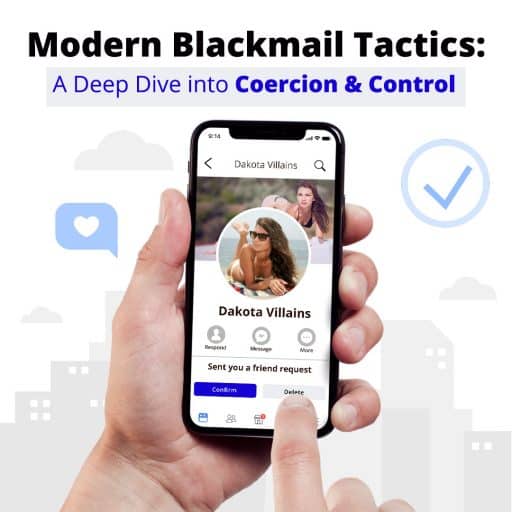They say the internet doesn’t forget, and in some ways, that may be true, but there have been recent moves to take back control of personal details. The ability to search for individuals and find information about them is a unique ability that has quickly become an issue for many people.
The rise of the internet and ease of access to personal details can be concerning. Your contact information, personal details, and potentially damaging information may be available for anyone to find.
This content is open for potential employers to find or for the general public to see. Inaccurate articles and pictures can harm your reputation and don’t allow you to give your side of the story.
Because the information about you is from one point of view, you may feel helpless, but there are several things you can do to get control of the issue.
We’ll cover the steps you can take to contact site owners, the methods at your disposal, and help guide you through the process to taking back control of your information. Here are 10 things you can do to remove, alter, or clean up your online presence:
1. Contact the Owner of the Site or Blog
One of the first things you should do on the path to removing online content is to ask the owner or person managing the blog, such as a webmaster. Removing the content at the source means that it will no longer show up on Google or other search engines and that anyone who links to it will no longer have an active URL.
You can reach out directly to the owner of the site by finding their contact page. Depending on your situation, you can explain the situation to the site owner and resolve the issue diplomatically.
2. Ask for Noindex on the Page
If the proprietor of the site is unwilling to remove the page you may ask for a compromise. Ask the site owner to add a no-index tag to the page. This ensures that search engines will not index the web page, meaning it won’t show up on results, but the page may still be visitable.
No-index pages can be accessed through links from other sites or within the site itself. Your situation may not yield the result of removing the negative content, but a no-index approach ensures that it is much harder to find if someone is looking you up in a general search.
3. Ask for a Change or Update to the Site or Page
If the first two steps still aren’t getting the results you need, contact the website owner and ask for changes or updates to the page. This can be a necessary step if the issue includes news articles or blog posts with outdated content. A request to the editorial staff to correct the information can result in changing negative content into positive content.
If you can provide information that supports your request, include it. You can also mention that the damaging content is harming your reputation, job hunt, or personal life. You’ll want to be able to support those claims with direct evidence if can share that.
4. Send a Cease and Desist Letter
An unresponsive or uncooperative site may need a firmer hand with a cease and desist letter. A cease and desist letter is best provided by an attorney who can inform the recipient of harmful content posing an issue of defamation. It will let the recipient know that you are requesting that they remove any harmful content about you and discontinue any further harmful intentions.
Oftentimes, a cease and desist letter can be a quick and effective way to see results without resorting to legal action. A cease and desist letter can be written by you or not signed by an attorney, but it needs to be carefully written and may not be effective against a stranger.
5. Submit a DMCA Takedown Request
A DMCA (Digital Millennium Copyright Act) takedown request is empowered by a law passed specifically for copyright issues and their relationship to the internet. DMCA takedown requests can be powerful tools as they show the person who is hosting the content that they’re violating copyright laws. Of course, in order for this request to be valid your content needs to have a copyright.
Copyrights cover all types of content, and copyright infringement can lead to heavy damages. Anyone hosting this content without your consent is in direct violation of the copyright laws. If they don’t remove the content after your request, they’ll be open to potential legal action.
6. Removal Request From Data Brokers
Data brokers accumulate information on people and store them in a database. These data brokers put together large sets of data from all over the internet which can build out an alarmingly robust picture of you. Data broker sites may have very sensitive information such as your phone number, home address, or other personal data.
This sensitive information could be used by bad actors and lead to identity theft or doxxing. Doxxing has been a trending issue where someone releases personally identifiable information to public places like internet forums or social media platforms.
The harmful practice of doxxing can lead to unwanted attention or swatting when a bad actor calls 911 in a situation that would require a SWAT team. The target is then visited by the police in what is a very dangerous prank call.
7. Use Online Reputation Management
There are times when the content doesn’t qualify for removal. This can be newsworthy content, something that has gone viral, or factual information that wouldn’t benefit from legal action. A reputation management company can step in and help change the flow of information.
Online reputation management companies are able to strategize and come up with solutions that can alter the path of your reputation or business. This can be beneficial if you’ve seen an issue that has led to or resulted in negative reviews on review sites.
If the first page of search engine results shows negative or untruthful things about you or your business, a reputation management service may be the right choice.
8. Flag Content for Terms of Service Violations
Terms of service violations can exist across almost all major sites, such as Google, social media platforms, and more. TOS agreements are legally binding, meaning anyone who agrees to use the platform agrees to the terms, and going against them can result in their removal. This helps prevent users from sharing explicit content and may protect or prevent minors from accessing the site.
If the information or content on a site goes against their terms of service they will likely have methods to report the user or site. Content that violates the terms will have the ability to request removal and will be reviewed. Depending on the violation and the site, the content will be removed and the violator will receive a warning or possibly removal from the platform.
9. Request a Removal From Google Search Results
Requesting a removal from Google can be very powerful and efficient in certain circumstances. Google is dedicated to keeping victims of revenge porn and those affected by the non-consensual release of pornographic material.
This can be a prudent step to take if the website you’re taking action against isn’t removing the content. Google will have the site removed quickly while you and your lawyer can work on permanently removing the content from the site.
10. Pursue Legal Action
Legal action may be the best or only step you can take to remove content online. The site owner may be unresponsive, attempts to flag the content may not fit your situation, or the actions taken by the other party could be severe enough to warrant legal action.
Whether the issue is with defamation, a minor, or negative content, a lawyer can help give you the opportunity you need to reclaim your life.
Uncover the Bad Actors
Digital Forensics Corp is ready and able to help you regain control of your content. If your sensitive information is online and giving you grief, our team of digital forensics engineers and social engineering experts are experts in their fields.
Using proprietary tools, we’re able to see the digital footprints left behind by online activity. Whether you need help finding the contact person who is hosting your sensitive data or content, or you need legally admissible documentation from a digital forensics standpoint, we can help.
Our team can gain control of a situation that may feel out of hand or give you the tools you need to stay safe online. Get your negative information removed and cleaned up and restore your online reputation.
When it comes to removing content we provide the details and tools you need to clear your reputation and be given a clean slate.
Sources:
Everything You Need To Know about the “Right To Be Forgotten” | GDPR.eu
Urgent Safety Message from FBI | The Society of Former Special Agents of the FBI
FBI Las Vegas Federal Fact Friday: The Dangers of Swatting | FBI






